With a wide variety of flavours, spices, and seasonings, the food in Colombo is truly exceptional. It is inspired by several cultures and ethnicities, culminating in a truly unique blend of taste and texture. One of the best ways to sample the essence of local food is by exploring the street food markets. While you’re there, keep an eye out for the must-try dishes in Colombo. Below are my favourites.
1. Rice and curry
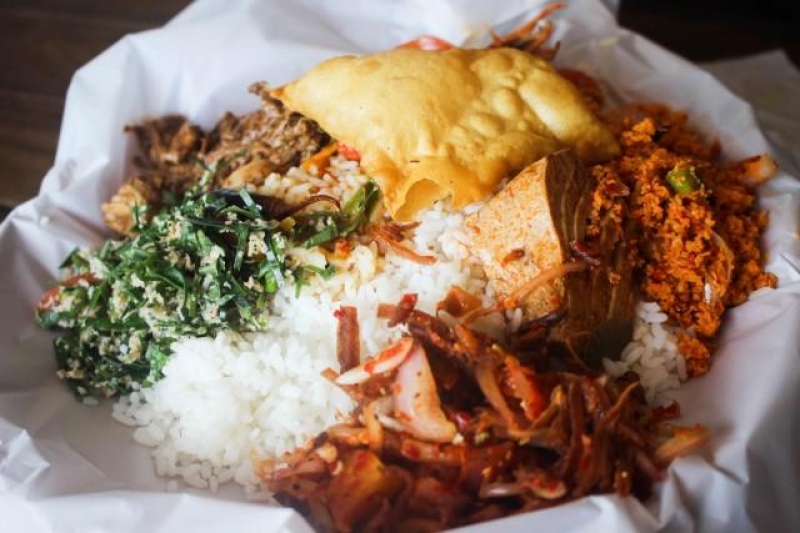
Image credit: Yamu.lk
This is the staple dish of Sri Lanka and you will be spoilt for choice when you want to sample it in Colombo. From the street food stalls by the roadside to hotel buffets, you can very easily find many vendors serving rice with curry on the side. In general, you’ll find five to six types of curries filled with spices. Depending on your preference, you can pick the one with fish or other types of meat. A single meal can fill you up and hit your daily requirement for nutrients, so make sure you grab a plate!
2. Isso-wadey
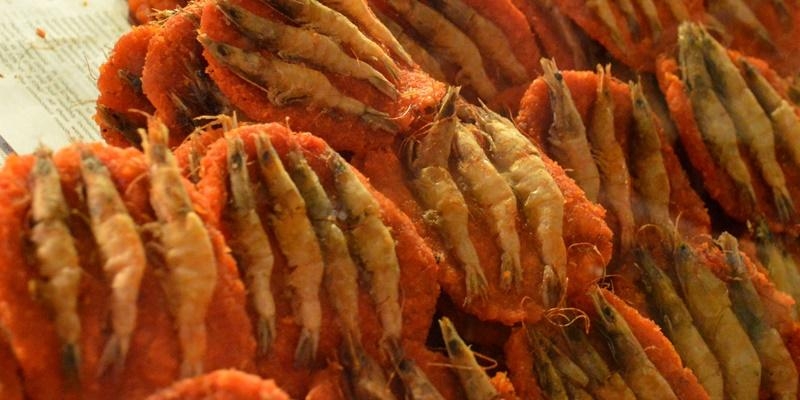
Image credit: My Lankan Dream
This has got to be one of the most well-loved street foods in Colombo. It is a patty made of lentils and grams, and topped with shrimps to give it added flavour. The most popular spot in Colombo where you can find it is Galle Face Green, an oceanside park where there’s a line of vendors selling them in carts. Add some crunchiness to it by sprinkling some freshly chopped onions.
3. Hoppers
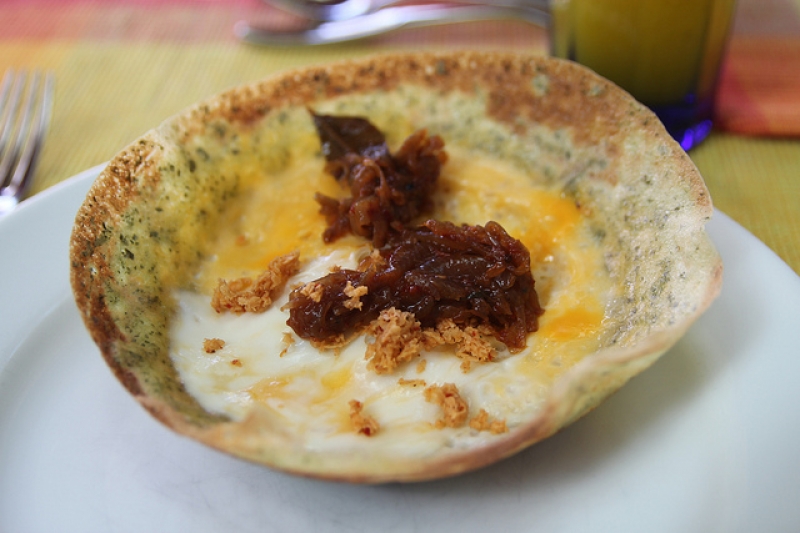
Image credit: Deirdre
This dish is locally known as Aappa, and you can recognise them as the Sri Lankan bowl-shaped version of crepes. They are made of fermented rice flour along with coconut milk, giving it a unique texture with crispy edges. It is usually accompanied by two or three curries but the most common add-on is lunu miris, which is chilli paste mixed with local spices. It’s a great breakfast option and you are very likely to see them prepared at the hotel buffet.
4. String Hoppers
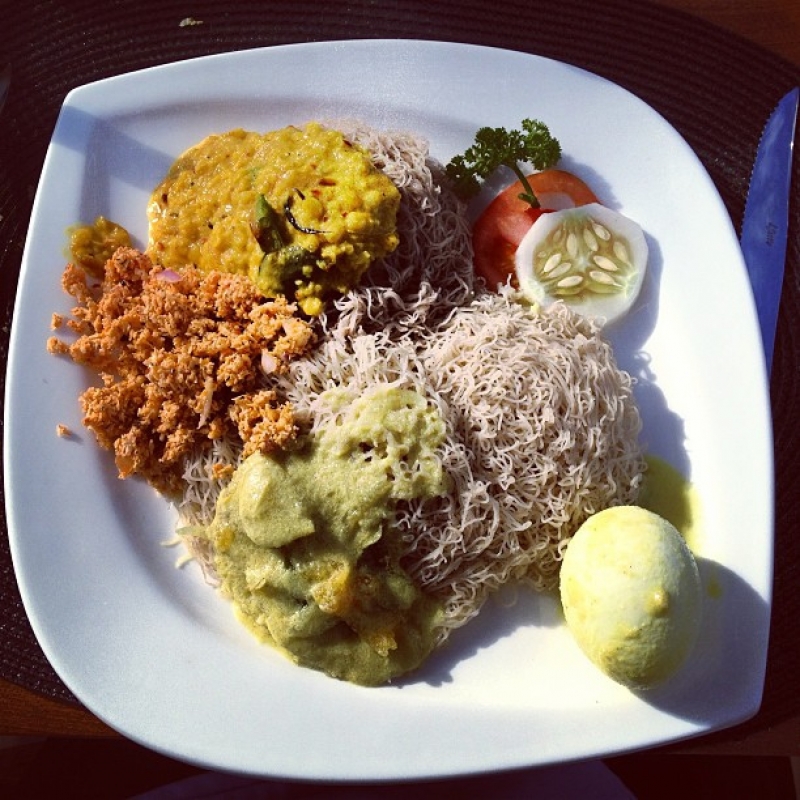
Image credit: istolethetv
This dish, also made of rice flour, is locally called idi-aappa and is popular with the locals. It takes the form of steamed noodles and it makes a great breakfast. It’s usually served with lentils, potato curry, pol-sambol which is grated coconut curry, along with a choice of meat.
5. Ambul Thiyal
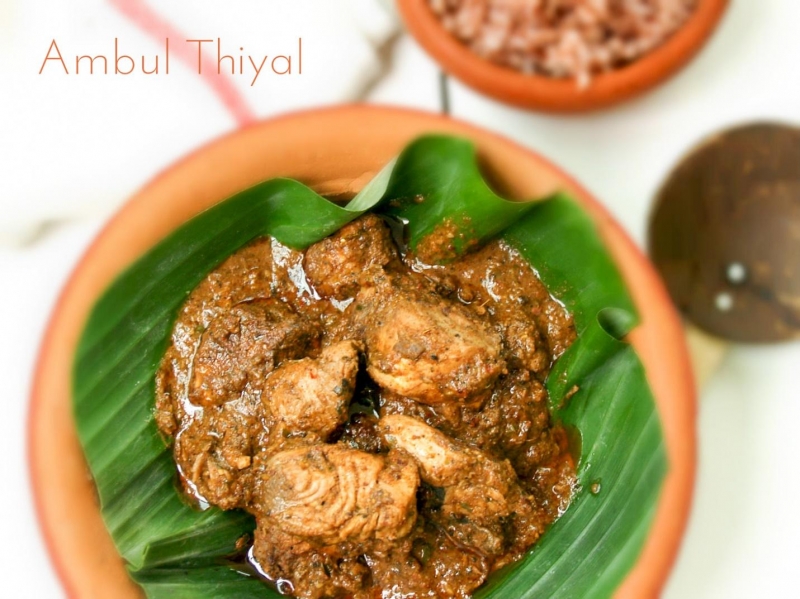
Image credit: My Sri Lankan Recipe
A popular dish found mostly on the southern coast of Sri Lanka, this fish curry has a bit of tanginess that adds a unique flavour to your meal. It’s also known as “sour-fish fry” and you can ask for a spicier option too if you think you can handle it.
6. Kiribath
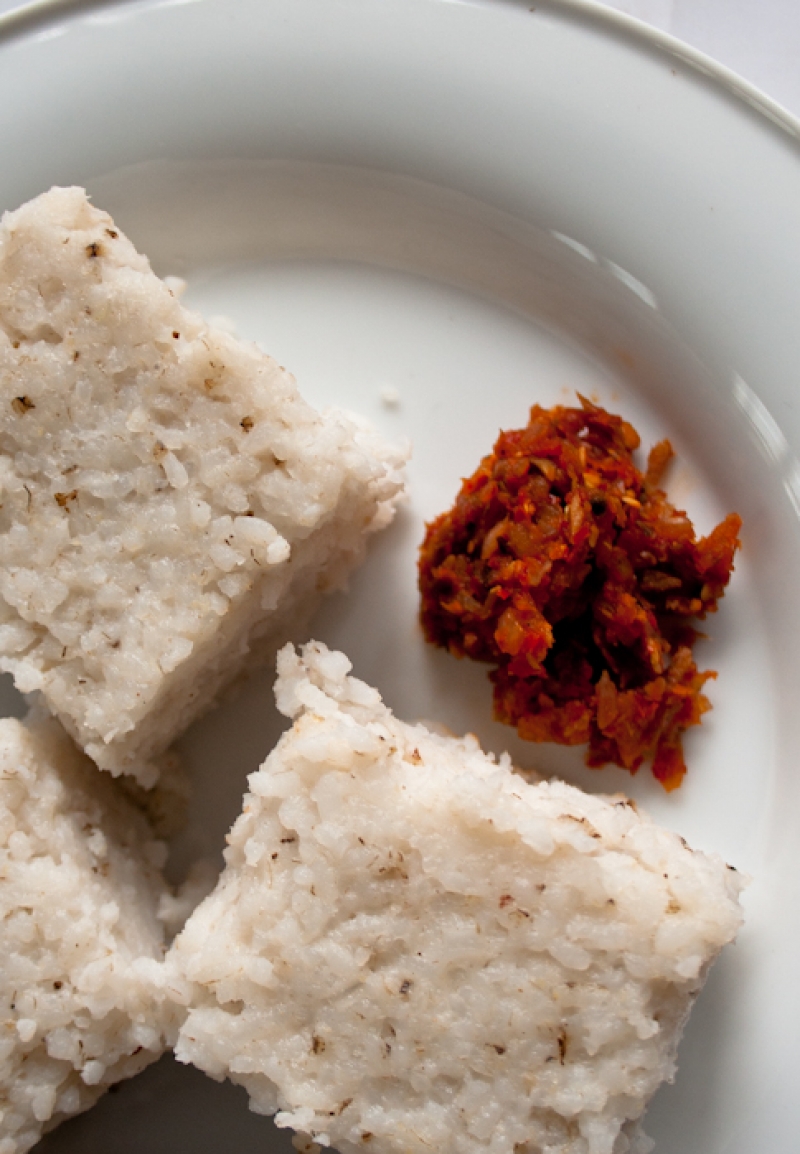
Image credit: Dhammika Heenpella
With a name that translates to “milk rice”, this traditional Sri Lankan dish comprises two main ingredients: coconut milk and rice. It is most popular during the Sinhala and Tamil New Year Festival, but is something many locals enjoy throughout the year. If you prefer the sweet version, you could opt to eat it with coconut milk along with some local jaggery. But more commonly, it’s eaten for breakfast with a side of lunu miris.
7. Kottu
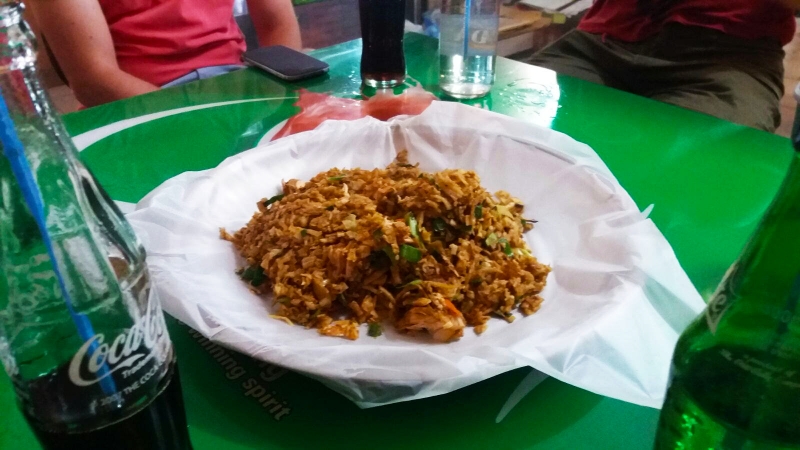
Image credit: cvandega
When in Colombo, you might get familiar with the sounds of the roadside food stalls making the city’s signature dish – Kottu. It’s a very popular street food that is made by shredding parotta bread into small pieces. A variety of spices and your choice of meat are added to give a unique flavour. Oh, and don’t forget to request the addition of cheese which helps gives the dish an added creamy texture!




